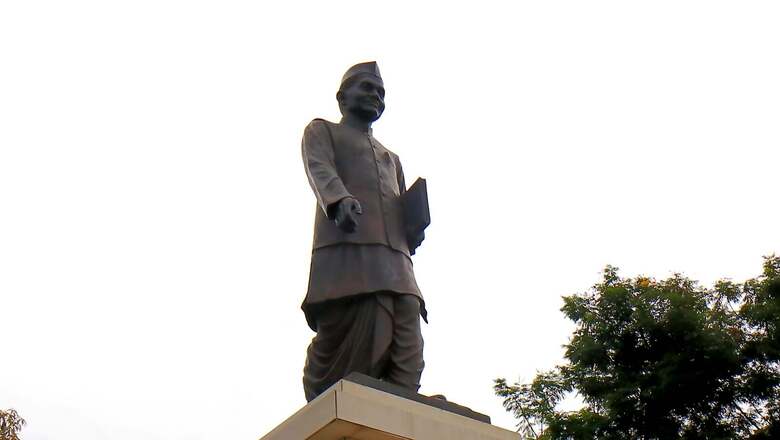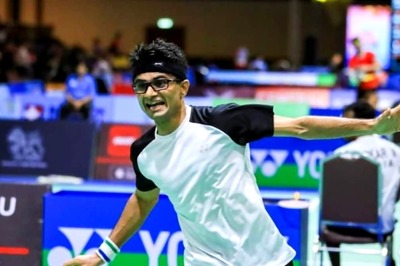
views
While the nation celebrates October 2 as the birthday of the Father of the Nation, it is often not remembered that the second Prime Minister of India, Lal Bahadur Shastri, too was born on this day, 117 years ago. Born 35 years after the Mahatma, Lal Bahadur Shastri is often referred to as a ‘quintessential Gandhian’. When undertaking research for my book ‘Lal Bahadur Shastri: Politics and Beyond’ (Rupa and Co, 2019), there were several snippets from his life and times that attracted attention. As one looks around at 21st century politics, there are lessons from the life of Lal Bahadur Shastri that are extremely illuminating.
During his long political career which began at the Allahabad (now Prayagraj) municipality and ended with the highest office of the land—Prime Minister of India—Shastri left the unique stamp of his identity. He never aspired for or was enamoured of political positions and yet was always entrusted with some responsibility or the other. After Independence, he served as the Minister for Police (later called Home) in the United Provinces. He later was handpicked by Jawaharlal Nehru and brought to Delhi to take charge of organizational matters in the Congress party and serve as the general secretary of the Congress party. In this role, he coordinated its electoral plans and strategies for the first Lok Sabha elections of 1952.
He went on to join the Union Cabinet after the 1952 elections only to resign a few years later as Minister of Railways, accepting more responsibility for a train accident. Many believe by this act he set a ‘gold standard’ in terms of integrity and moral responsibility. When no longer in government, he was once again given organizational responsibilities in the Congress party which was then getting its act together to face the 1957 Lok Sabha elections. When the Congress formed the government after elections, he was back in the Union Cabinet handling several key portfolios, finally succeeding his political mentor Govind Ballabh Pant as the Union Home Minister. In 1963, he quit the Cabinet as part of the Kamaraj Plan only to return to the government within a few months as minister without portfolio to assist an ailing Jawaharlal Nehru. He went on to become the Prime Minister in 1964, a position he held for 19 months, till he passed away in January 1966.
Lal Bahadur Shastri’s 19-month tenure as Prime Minister of India was sandwiched between 17 years of Nehru and 11 years of Indira Gandhi (Indira Gandhi later came back for a near five-year term between January 1980 and October 1984). He emerged as a consensus candidate for the leadership of the Congress Parliamentary Party in 1966 as he had no enemies either within his own Congress party or in the Opposition. His principal rival for that position was Morarji Desai. Desai backed out of the race and decided to support Shastri when he saw consensus emerge on his candidature. Before formally agreeing to allow his name to be floated for the leadership position, Lal Bahadur Shastri ensured that Indira Gandhi was not keen to succeed her father.
Shastri’s brief tenure as Prime Minister saw him moving from one crisis to another. He was required to deal with the food crisis across the country and the anti-Hindi agitation that had erupted in South India. In both cases, he resolved the issues through discussions, by reaching out to people and with a coordinated strategy. His most serious test was the military adventurism by Pakistan leading to the 1965 war. The Pakistani leadership had believed that under Shastri’s leadership, India had been weakened and this was the best moment to intervene.
Shastri handled the Pakistani actions with tact, firmness and a quiet determination, securing the support of political leaders, bureaucracy as well as the armed forces. Many consider his permission to the Army to enter Pakistan to destroy key military installations as the ‘first surgical strike’ launched by India. His slogan ‘Jai Jawan, Jai Kisan’ vibrated across the country and united the people to fight the challenges it faced.
As Prime Minister he led a life of simplicity, honesty and dignity. Lal Bahadur Shastri’s success lay in his approach of taking decisions based on consensus after extensive discussions. A diminutive leader who was all of five feet, his stature and influence were truly breathtaking. He left the stamp of his uniqueness in every responsibility he was entrusted. One salutes his contribution to the building of Modern India.
Sandeep Shastri is the author of Lal Bahadur Shastri: Politics and Beyond and Vice Chancellor, Jagran Lakecity University. The views expressed in this article are those of the author and do not represent the stand of this publication.
Read all the Latest News , Breaking News and IPL 2022 Live Updates here.



















Comments
0 comment